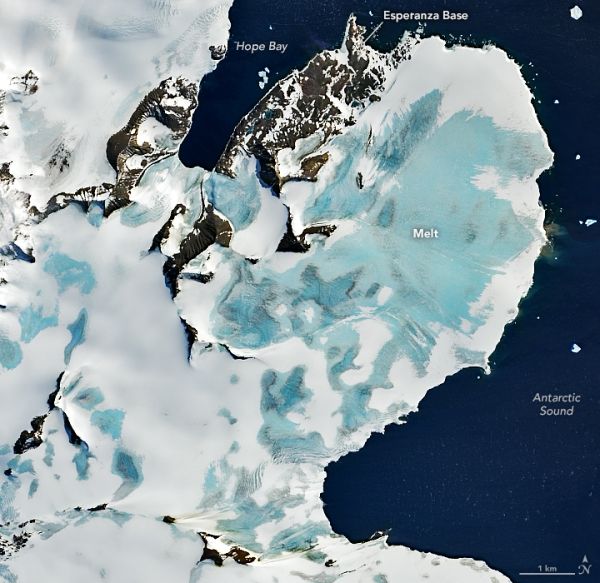In mid-November, about a month before the start of summer in the southern hemisphere, the Antarctic melting season is usually just starting. By that time this year, vast areas along the Antarctic Peninsula were already painted blue with meltwater.
This natural-color image was acquired on November 21, 2020, by the Moderate Resolution Imaging Spectroradiometer (MODIS) on NASA’s Terra satellite. The sea ice anchored to the peninsula’s coast appears light blue where the surface ice has melted. The white ice farther off the coast is a mixture of broken sea ice and small icebergs. Dark areas indicate open water.
By the end of November 2020, much of the meltwater on the ice had refrozen. But scientists want to know if this event was similar to a strong early season melt that launched the 2019-2020 melt season. Last year, unusually warm air and water led to record-breaking melting across the Larsen C Ice Shelf. It is the largest remaining ice shelf along the Antarctic Peninsula, even though it lost a Delaware-sized iceberg in 2017.
Continue reading at NASA Earth Observatory
Image via NASA Earth Observatory


